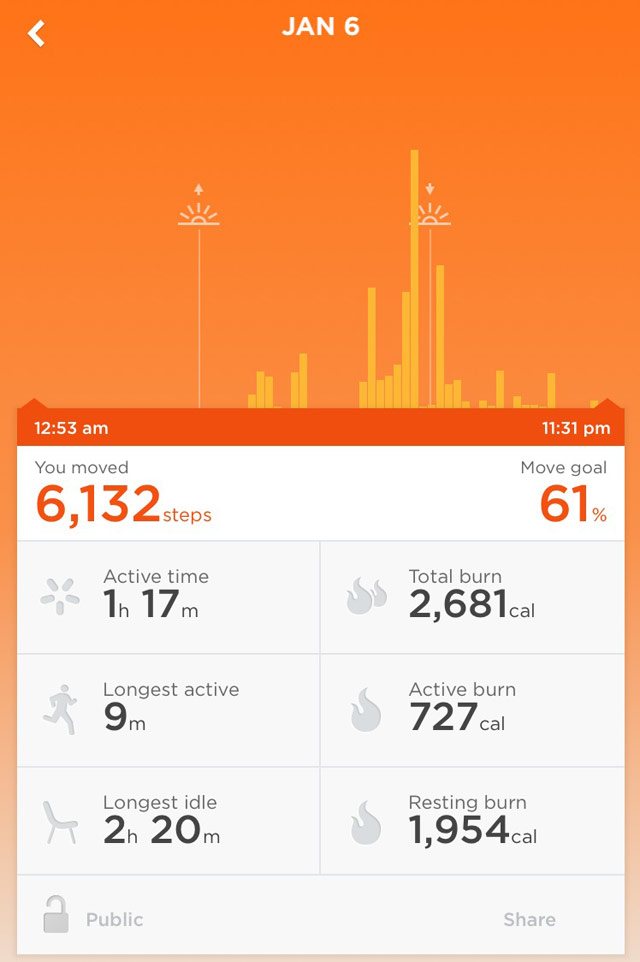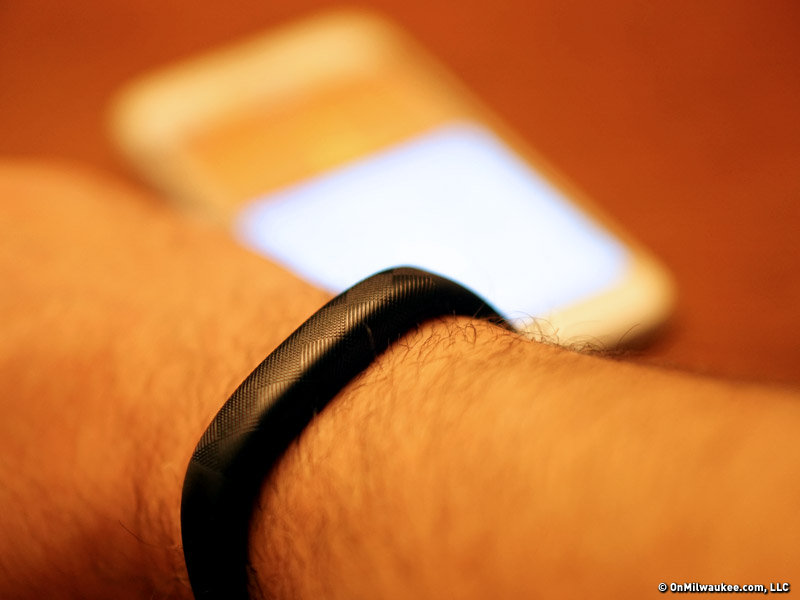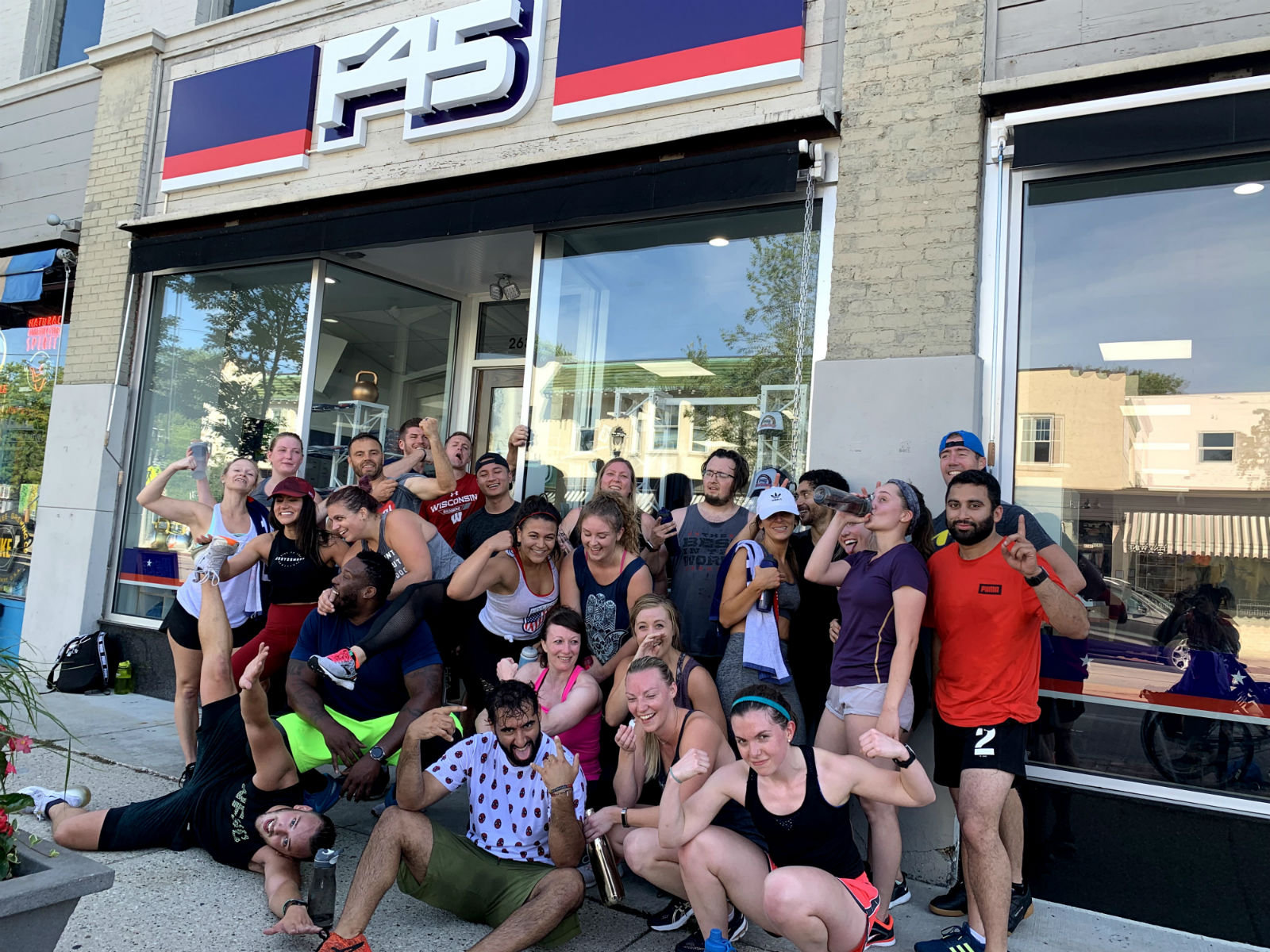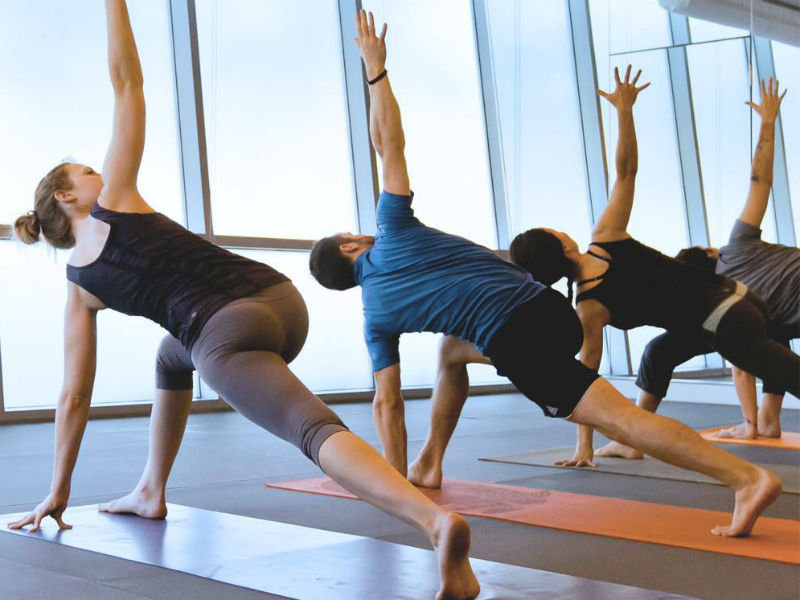New Year's celebrations are behind us, leaving only the resolutions to eat better and get fit. Don't worry, we're here to help. This week – Healthy Living Week, brought to you by The Milwaukee Y – we will focus on articles and information about exercise, eating right and staying healthy in a variety of ways.
Back in October, lying in bed in the middle of the night, partially zonked out on Ambien and on a whim, I bought a Jawbone UP2 activity tracker for about $80.
None of that is really surprising to those who know me: nearly 18 years of entrepreneurship had ruined my ability to get normal sleep. Like so many others, I lied in the bed until the wee hours, checking email, thinking about work or the next day and over the previous few months, only the velvet hammer that is Zolpidem would knock me out.
Of course, like so many others, I did unusual things in the middle of the night after taking Ambien. For me, those were limited to eating (like a gallon of ice cream) and online shopping (let’s just say Amazon and eBay love me). I never went for a drive. I may have sent some weird middle-of-the-night tweets.
I was getting by, though, at least so I thought. That fitness tracker purchase, however, turned out to be a really wise Ambien buy: among other things I learned, it led me down the path to learning I suffer from moderate sleep apnea.
More on that in a second, though.
Specifically, I picked the UP2 because it was not only the least ugly piece of fitness-tracking man jewelry I could find, but also it wasn’t the most expensive product on the market – and even under the influence of sleeping pills, I wasn’t sure this was a long-term commitment I was willing to make.
In terms of the counting-steps part, I quickly learned that on more sedentary days, I struggled to hit an average of 5,000 steps. But if I picked parking spaces further away from the front door, took longer walks to find lunch – or better yet, went for a walk or a run – 10,000 steps (about five miles) was an attainable goal. Before the temperatures really started to drop, I walked much more than usual, and I even felt a little less stressed out. I certainly felt sharper during the day, and my pain from a never-healing torn hamstring/glue medius seemed a little tamped down with more regular movement.

But what really struck me was the sleep-tracking feature. I’ve never been a "morning person," and now I see why. While I understand that a sub-$100 wristband isn’t a scientifically honed device, it did show me trends. I slept very lightly, waking up lots (even with Ambien or its herbal and less-herbal competitors) for the first half of the night, and my deep sleep came after 4 a.m., until the moment I finally pried myself out of bed in the morning. No matter what time I went to bed, I was only getting two or three hours of "deep sleep," and it was totally at the wrong times. It makes sense that I felt like a zombie until about 5 p.m. each day. My natural Circadian rhythm was inverted, at best, and completely screwed up, at worst.
While my wife had been urging me to go in for a sleep study for years, the data finally convinced me to make the appointment. Both my parents have sleep apnea, and I learned from the doctor that the shape of one’s throat is genetic, so even with a quick examination, he believed I might be suffering from the same condition. You can do the research on what the medical definition of sleep apnea is, but it’s not good.
As soon as my insurance gave the green light, I participated in a sleep study, which was actually more pleasant than I expected. It revealed that I stopped breathing up to 12 times an hour, which is considered moderate apnea. The doctor explained that without a CPAP machine, my risk of heart attack and stroke (which definitely runs in my family) is increased. While I was skeptical of this a bit – it seems that everyone who goes in for a sleep study gets a CPAP machine – I was also desperate. I didn’t like the idea of being addicted to Ambien and I didn’t want to live a second-shift lifestyle when I should be awake in a first shift.
Getting used to the CPAP machine has been difficult these past two months. It’s awkward and uncomfortable, and the humidity level tends to either make me feel like I’m being gently waterboarded, or I wake up with a dry, sore throat from not enough humidity. Sometimes I rip it off in the middle of the night. It makes funny, squeaky noises, and at my six-week follow-up appointment, the doctor mentioned that I was only averaging four hours wearing it each night (it uploads data cellularly in to the "cloud.") But he also noted that the auto-adjusting pressure was doing its thing; my "sleep events," which means stopping breathing, had dropped to around once an hour. That sounds pretty good. Zero would be better.

On the nights that I have managed to wear this very non-sexy full-face appliance, I have certainly felt more well-rested in the morning. And I’m watching how the fitness tracker thinks I’m sleeping, too. It’s showing more deep sleep at the right times, and while I’m not yet where I need to be, I’m not using Ambien anymore. Effortlessly, I’ve dropped about 10 pounds since December.
Now, this particular Jawbone UP2 was far from perfect. It fell off all the time, and the app was buggy at best. In Las Vegas in December, I lost it for good, and the app was frozen and couldn’t pinpoint its last location. Jawbone sent me a free replacement – one that’s less fashionable but stays on more; certainly, there are other options worth looking at, depending on your style and your budget. Mine doesn’t show anything on the band, itself, so I have to check the app to monitor my progress. I don't really get into the team challenges. This a purely personal journey for me.
I do like that that the Jawbone syncs wirelessly with the Whitings wi-fi scale, so I can see how activity, sleep, BMI and weight work together. My wife’s bulkier Garmin Vivofit 2 doesn’t sync the same way, but it also has a battery that lasts a year – mine needs to be recharged weekly.
Did a fitness tracker change my life? Yeah, I guess it kind of did, especially because it revealed a medical condition that could have serious ramifications down the line, even if, so far, I’m definitely in an adjustment phase.
But good sleep is important and restorative, and I want to start getting it again. Maybe someday I’ll say this little black band saved my life. If you could use a closer look at your own body’s activity, I strongly suggest you give one a look.

Andy is the president, publisher and founder of OnMilwaukee. He returned to Milwaukee in 1996 after living on the East Coast for nine years, where he wrote for The Dallas Morning News Washington Bureau and worked in the White House Office of Communications. He was also Associate Editor of The GW Hatchet, his college newspaper at The George Washington University.
Before launching OnMilwaukee.com in 1998 at age 23, he worked in public relations for two Milwaukee firms, most of the time daydreaming about starting his own publication.
Hobbies include running when he finds the time, fixing the rust on his '75 MGB, mowing the lawn at his cottage in the Northwoods, and making an annual pilgrimage to Phoenix for Brewers Spring Training.







